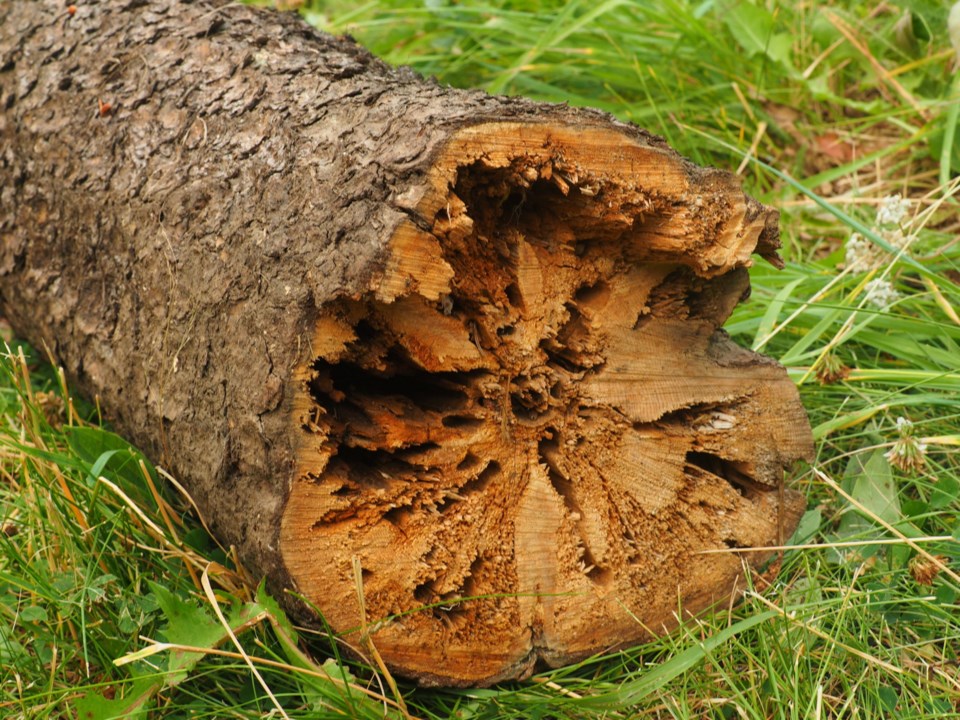“We are still living under a pretty heavy cloud of uncertainty as to what the future is going to look like,” laments Merlin Blackwell.
The mayor of Clearwater was expressing fears that it could be several years before his community recovers from last year’s permanent shutdown of the nearby Vavenby sawmill – and the resulting loss of nearly 200 good paying jobs.
Blackwell describes the Canfor decision as “an absolute body blow” for his community. It proved to be the start of things to come for British Columbia’s beleaguered forest industry.
“In my memory, I don’t recall a year as tough as 2019,” says Russ Taylor, a forest industry analyst.
Taylor describes last year as a “perfect storm” that went on forever.
“If you’re a high cost producer, you always lose until the markets get really really good,” he says, despite expectations of somewhat higher lumber prices in 2020.
While the provincial government readily admits thousands of direct and indirect jobs have been lost in nearly 30 forest-dependent communities across B.C., some towns have suffered more than others. The deepest cuts came from permanent mill closures in Vavenby, 100 Mile, Quesnel, Mackenzie, Maple Ridge, Kelowna, Errington, and Fort St. James which declared “a state of economic crisis” last summer.
So now the question is whether 2020 might mark the start of a much-needed recovery? Not likely, says Taylor. As the Managing Director of Forest Economic Advisors, he constantly monitors lumber markets around the world. Amid a global cost study, Taylor says one thing is abundantly clear from their research:
“Without question, the current model doesn’t work and we should be talking to the Americans about how we’re going to change it,” says Taylor, describing BC’s stumpage rate system as “the elephant in the room.”
While highly critical of the current formula for setting timber cutting fees established in 2003, Taylor is adamant that other lumber producing jurisdictions are quite happy with less competition from BC:
“The rest of the world is doing fine thank you very much. That’s a real kick in the teeth to the industry here and our unemployed workers.”
But while high log prices and dwindling timber supply are commonly blamed for the current crisis, the government defends the current stumpage rate system, arguing it reflects the scarcity of timber from the Mountain Pine Beetle outbreak and two straight record wildfire seasons. BC government officials are also convinced that changing the current stumpage rate system would weaken Canada’s legal case against American duties on softwood lumber.
For Taylor, lower production costs hold the key to survival for forest companies:
“In the rest of the world, log prices are determined by the market, while in B.C. they are priced by some complicated formula that nobody knows.”
He also argues that while log costs in British Columbia have increased 25% over the past two years, those same fees in Europe have plummeted by 50% as a result of an outbreak of the Spruce Bark Beetle.
“It’s getting to be bigger than the Interior Mountain Pine Beetle story ever got” warns Taylor, who notes Europe is now shipping more wood to Asia than North America.
While predicting a 10% per cent increase in lumber prices in 2020, Taylor sees little cause for optimism among B.C. producers. He asserts that given current stumpage rates charges here, higher prices will only add to the profit for international operations while mills in B.C. will continue to struggle to break even.
Happy New year? Not likely if you work in the B.C. forest industry.
As always, I welcome your comments and criticism on Twitter @kammornanchor and email [email protected].
Bob Price is a veteran B.C. broadcaster who anchored the morning news on CHNL radio in Kamloops for the past 30 years. Bob is also a past Webster Award winner whose previous stops included Vancouver and Calgary.



